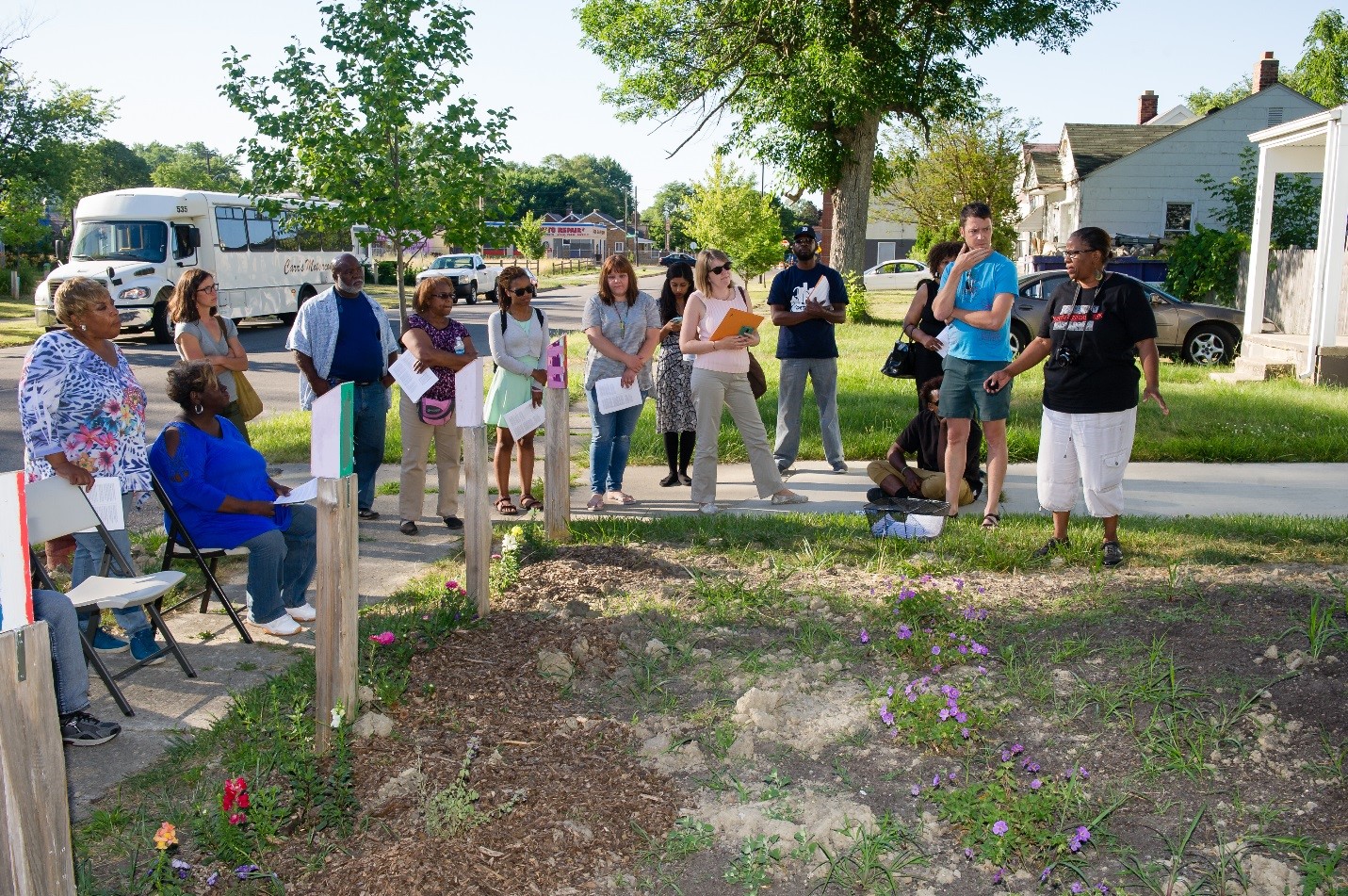A Green Culture Shift: Changing Perspectives on Open Space in Detroit
March 8, 2018

Whether it’s the roughly 120,000 vacant lots like Detroit, or the roughly 14,000 vacant lots in the City of Baltimore, vacant lot statistics are enough to keep one up at night. The 2012 Detroit Future City Strategic Framework was the first planning effort in Detroit to daylight the sheer magnitude of the city’s vacant land inventory, identify obstacles to vacant land reuse and maintenance, and recognize the untapped potential of the city’s land. While specific policies and practices must be changed to support a truly transformative integrated open space strategy, we know this cannot be carried out without a ‘green culture shift’ involving everyone from city hall to city residents.
While we can make the case for why intentional open space is important through data and research, we must also change the culture of how we think and feel about open space in an urban context. Detroit Future City (DFC) has defined a green culture shift as looking beyond the value of land as defined by the real estate market and recognizing the opportunity to use land to promote environmental sustainability, quality of community life, and equitable economic opportunity. DFC wrote a brief report to continue building the case to Detroiters and stakeholders that even in the midst of relatively accelerated building development in concentrated areas of the city, vacant land is still a reality for most of Detroit, and presents a unique opportunity we must seize now.
As a ‘think and do tank,’ DFC developed the Field Guide to Working with Lots, to support Detroit residents, community groups, institutions and government with accessible landscape based designs that expand the imagination of what’s possible on vacant lots and directly link the designs to a variety of community needs. To spur their installation, a companion mini-grant program was deployed to fund installation of these creative vacant lot treatments and invest in building the skills of the community-based grantees. Through three cohorts of this program and partnerships with community organizations, we have seeded over $200,000 into the Detroit community to catalyze the transformation of approximately 100 lots. This is a mere drop in the vacant land bucket. However, we have experienced that is not just the lead participant in the project; it is the full team they have assembled to implement that now has enhanced capacity to transform vacant land, or at least speak to its potential for neighborhood stabilization. If maintained, it is also the people who drive or walk by who do not know anything about the Field Guide, but experience those formerly vacant lots (even if they would prefer a single-family home be built there!) as a contributor to making Detroit a better place to live.
No one organization can carry the message alone- or act only at the lot-by-lot scale to achieve citywide results. Through the development of the report Achieving an Integrated Open Space Network in Detroit and convening an Open Space Working Group to support its recommendations, we have worked to build a coalition of those whose missions are linked to land innovation. The group has looked at vacant land from a host of data perspectives:
- Identifying where the vacant land is located, and which organizations are working nearby
- Layering City led plans or growth strategies to understand where traditional development is more likely to occur
- Looking at where vacant land will expand based on building condition surveys, or a defined demolition pipeline
- Mapping where community farms and other urban agriculture are located, and where parks, forest patches (small woodlots or clumps of trees that have a canopy cover are greater than 10,000 square feet), and residential tree canopy exist
Though visualizing the existing open space assets, we can start to identify geographical opportunity and coalesce a variety of stakeholders who are most impacted by vacant land, and those who are geographically proximate to where it has already been transformed and is serving as an asset.
Detroit Audubon Society is one such implementation ally through their work advancing the ‘Detroit Bird City’ project. This initiative proposes the conversion of five unused or under-utilized City of Detroit-owned parks identified in the Parks and Recreation Improvement Plan as “Community Open Spaces” into intentional meadows, creating essential habitat for migrating songbirds and grassland birds. The Audubon Society and City of Detroit recognize un-programmed public land is often perceived as blighted or abandoned so a public engagement process and the installation of signage and interpretive materials will be critical to making the case that natural landscapes like meadows have aesthetic and environmental value.
Being pro-open space is not being anti-building development. It is a new way of thinking about development where open space is an asset in neighborhoods with varying vacancy rates. The number of vacant lots will continue to increase as the City of Detroit works to meet its stated target of demolishing an additional 6,000 vacant structures by spring 2019. Rather than lament or ignore this condition and wait for silver bullet development strategies, now is the time to unite around this opportunity that relatively few cities have. We can leverage vacant land as an asset to address the needs of residents today, and work toward building a resilient city the future will demand.
Victoria Olivier is Director of Land Use and Sustainability at Detroit Future City, a nonprofit charged with catalyzing implementation of the DFC Strategic Framework through providing access and information to Detroiters, informing and guiding decision-makers’ initiatives and projects, and the coordination of a multitude of stakeholders.
Get the latest tools, resources, and educational opportunities to help you end systemic vacancy, delivered to your inbox.
